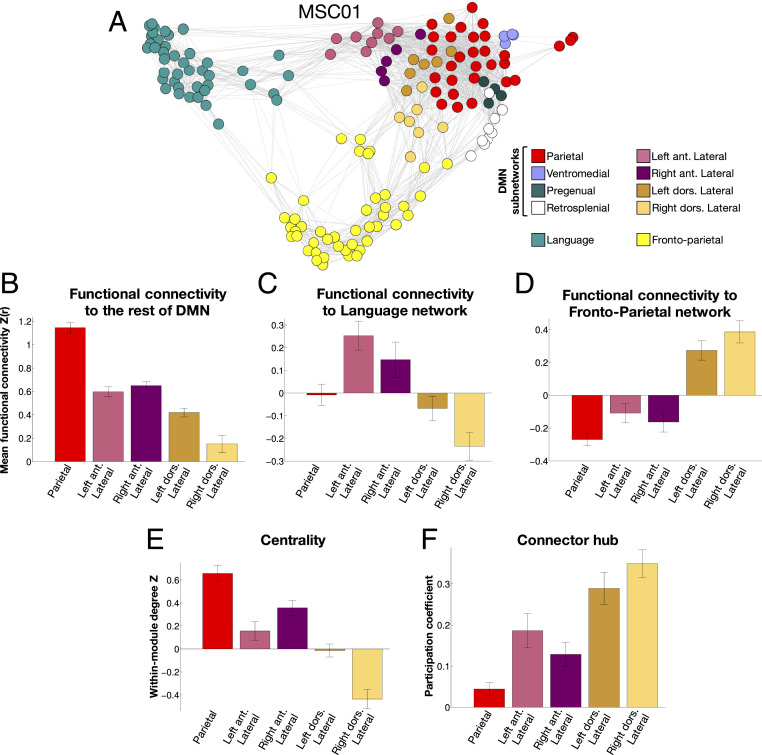Fig. 5.
DMN subnetworks are differentiated by functional connectivity to large-scale networks and by network role. (A) A spring-embedding plot illustrating relationships among DMN subnetworks and other networks in one example subject. Language and Frontoparietal networks are linked to specific DMN subnetworks. Nodes in this network are contiguous subnetwork regions. The Posterior MTL subnetwork is not shown here as it connects only to itself in this subject. (B) The Parietal subnetwork exhibited stronger RSFC to the rest of the DMN than any Lateral subnetwork. (C) The Anterior Lateral subnetworks both exhibited stronger connectivity to the Language network than any other subnetwork, except the Left Dorsal Lateral subnetwork. (D) The Dorsal Lateral subnetworks both exhibited stronger connectivity to the Frontoparietal network than any other subnetwork. (E) The Parietal subnetwork exhibited larger within-network degree Z scores than any Lateral subnetwork except the Right Anterior Lateral subnetwork. (F) The Parietal subnetwork exhibited smaller participation coefficients than any Lateral subnetwork. Error bars indicate SEs across subjects. ant., anterior; dors., dorsal.

